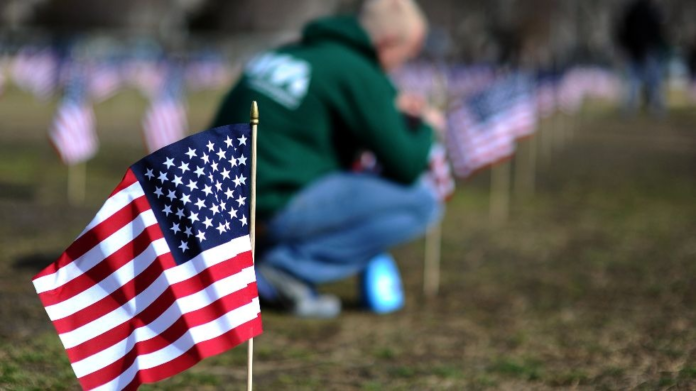A new assessment from the U.S. Veterans Administration trumpets a decline in the national suicide rate among veterans, but the drop highlights a simmering issue pressed by suicide prevention advocates — the likely undercounting of the data that the government collects.
It’s long been a contention of advocates that the VA data, while helpful, are incomplete. For example, the deaths of many veterans may not be tallied as suicides in certain instances in which self-harm plays a critical role. These include deaths due to addiction, drug overdoses or alcohol-induced incidents. While not strictly defined as suicide, they represent a statistical grey area. In addition, much variation permeates how each state accounts for deaths. An officially declared suicide in one state might not be in another, given the same circumstances.
A crisis at Fort Bragg in North Carolina, where overdoses are rampant, speaks to this undefined zone.
The chasm between the official suicide count and the unofficial came to the fore recently when the group America’s Warrior Partnership released an interim report from its multi-year study of suicide deaths across eight states — Alabama, Florida, Maine, Massachusetts, Michigan, Minnesota, Montana and Oregon.
Researchers gathered state death records and coordinated with the Department of Defense to corroborate military affiliation and cause of death. The aggressively researched findings uncovered significant disparities between state and VA data and a large error rate in how the VA accounts for deaths. It found that, across the eight states, the actual suicide rate was much greater, at 1.37 times the rate officially reported by the VA. And when researchers added in veterans whose deaths were from self-injury, including overdose deaths and other behavior closely aligned with self-harm or suicide, the true rate of suicides among former servicemembers was a shocking 2.4 times higher than the rate that the VA reports.
The findings got the attention of one of the largest veteran organizations, the Veterans of Foreign Wars, which called on the VA to do a more thorough dive into the available data. “Things like the increased (suicide) rates in certain age groups, identifying what are considered ‘accidental’ deaths, and the rise of opioid use disorder need to be explored,” said the VFW in a statement.
Even in the lower ranges, the VA numbers underscore a massive national problem. Veterans are far more likely to die by suicide than Americans who never served in the military. And according to the VA data, suicide is the second leading cause of death for veterans aged 18 to 44, right behind accidents, which is one of those statistical grey areas that might well include suicides.
Identifying the full scope of the problem by giving the data a closer look is essential for developing more effective ways to combat the scourge. But whatever the root causes of these suicides, including mental health issues, traumatic brain injury or addiction, we know from extensive research that social isolation is “arguably the strongest and most reliable predictor of suicidal ideation, [suicide] attempts and lethal suicidal behavior,” according to the VA.
Ending isolation is key to ending suicides.
All the more reason why the U.S. Senate must approve a measure that would declare the Sunday after Veterans Day “National Warrior Call Day.” With its simple mission of imploring all Americans to connect with someone who has worn or is currently wearing the uniform and let them know they care, National Warrior Call Day can foster greater connectivity. Greater connection can save lives.
The establishment of National Warrior Call Day is supported by 27 Medal of Honor recipients, numerous veterans organizations and several former VA secretaries.
While government staffers and suicide prevention advocates can argue about the numbers, we find common ground on this truism — the tragedy of any veteran’s suicide diminishes us all. The nation is failing those for whom we ask the fullest measure.
Frank Larkin is a former Navy SEAL, 40th US Senate Sergeant at Arms and father of a Navy SEAL son who died by suicide. Larkin is chairman of Warrior Call and chief operating officer of the Troops First Foundation.
For veteran suicides, the numbers may be far worse than the government says
RELATED ARTICLES



